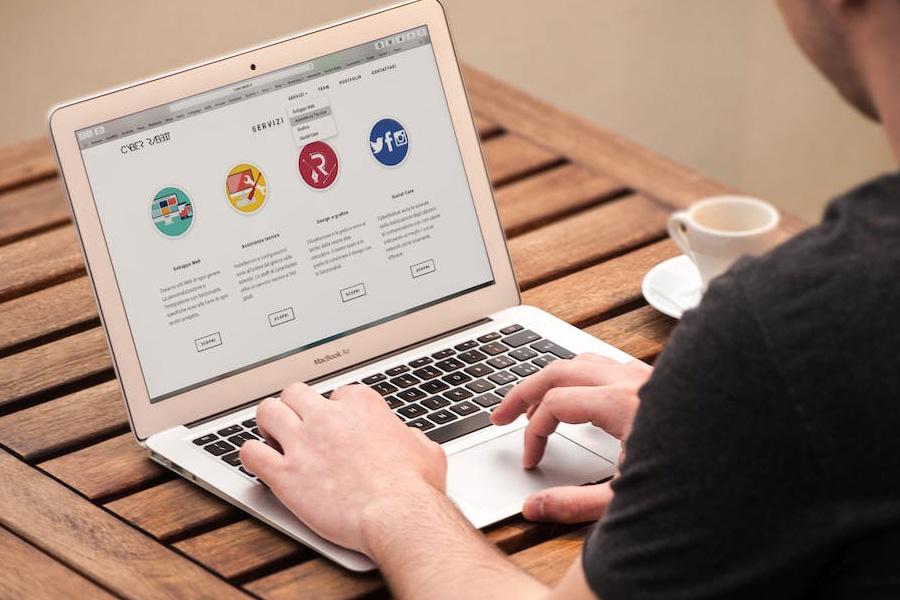At DigiBubble, a full-service digital agency, we understand that selecting the right website platform is…
Web Design – Remembering the Basics…

5.
Web Design – Remembering the Basics…
Web design requires knowledge of both art and business. However, most websites only convert a small percentage of their visitor base into tangible leads. To remain competitive in the marketing field, businesses must ensure their websites do more than be visually appealing; they must actively promote sales and stimulate user engagement.
Having a user-centric design on websites can help drive sales. Therefore, it is essential for marketers and business owners to understand their customers and their buying habits. They need to consider how the visitors view and engage with the products, and what drives them to take the purchase decision.
Establishing an effective brand is just one step of the UX process. A successful website should also be attractive, informative, convincing, and helpful. Just like a physical store, it needs to make people feel at ease when visiting. To accomplish this, there are some fundamental UX principles that you should consider implementing:
 Web Design for a reason
Web Design for a reason
Space is a limiting factor for web designers, thus requiring extra thought to be put into each element. Even though small items such as social media buttons and registration forms may appear to be simple, they contain complex code on the back end. Every button, banner, form and paragraph should aim at making maximum utilization of the visitors’ time on the website.
This blog post serves as a great example of effective web design. It is informing audiences about something, giving them the means to share the information, linking to other sources for relevant information and fostering engagement too.
Calls to Action!
Time is of the essence when it comes to customer engagement. Give them the clarity they need and provide specific instructions on where to find important information, sign up for deals or action a purchase. This will aid in quickly transitioning potential customers from interest to conversions.
To ensure your website visitors can quickly access what they need, strategically add calls to action on all relevant pages and posts such as the homepage, product pages and blog posts. Doing this will save them time and effort in having to search for what they’re looking for.
 Conversions Conversions Conversions
Conversions Conversions Conversions
Having a clear plan and structure for your website is crucial for success. This includes mapping out conversion funnels which act as the framework of your site, allowing visitors to easily navigate towards becoming customers. It is essential that you design with this in mind and consider the components that will most benefit you in driving sales.
The final design should be aesthetically pleasing, well connected, and make the user experience enjoyable. An example is a store or boutique that people visit to browse and explore – regardless of whether they buy something or not.
Rational Navigation
Marketers must not overlook the obvious – if some content is particularly important, it might require its own page. To make sure users can find what they are looking for, ensure that your website has multiple tiers of navigation and focus keywords in the right place.
It’s important to have both primary and secondary navigational options available. This can be done by having a main navigation menu at the top of the page and including a less intrusive sitemap near the footer. This way, if people need it, they’ll be able to easily find and use it.
 Make your Web Design stand out
Make your Web Design stand out
With the abundance of websites available online, it can be challenging to make yours stand out and attract visitors. When creating a new web design, it’s important to consider its goals and ensure that you are taking steps to differentiate it from competitors.
It’s important to include visuals when writing blog posts – instead of boring stock photos, try to find images that have a personal touch. If your brand suits it, inject humour into your visuals. Don’t be afraid to look outside of the industry for ideas and inspiration when it comes to design.
Think about engagement
Online media is unique in its ability to engage users through interactive elements such as clicking, logging in, scrolling, and more. Creating content that encourages people to take these actions on your page is important.
When you create blog posts or articles online, it’s important to remember that people absorb info not just through reading and listening. Add interactive elements to encourage user engagement, but don’t go overboard. It’s best to be subtle in order to provoke meaningful comments and reactions.
Emotional appeal is the finishing touch for successful Web Design.
User Experience Design is all about providing a rational experience, however, people are also moved by their emotions. Utilizing an appropriate colour palette, relevant graphics and stimulating slogans can keep your visitors engaged and satisfied. This type of emotional connection can turn casual browsers into repeat customers.
So, if you are considering web design or development and working alongside your digital marketing strategy to build something truly unique, speak with us. At DigiBubble we pride ourselves on understanding your brand and business approach, building a brand identity that is an accurate and honest portrayal of your business. Please give us a call on 0203 920 7276 or contact us and let us know what you need.



